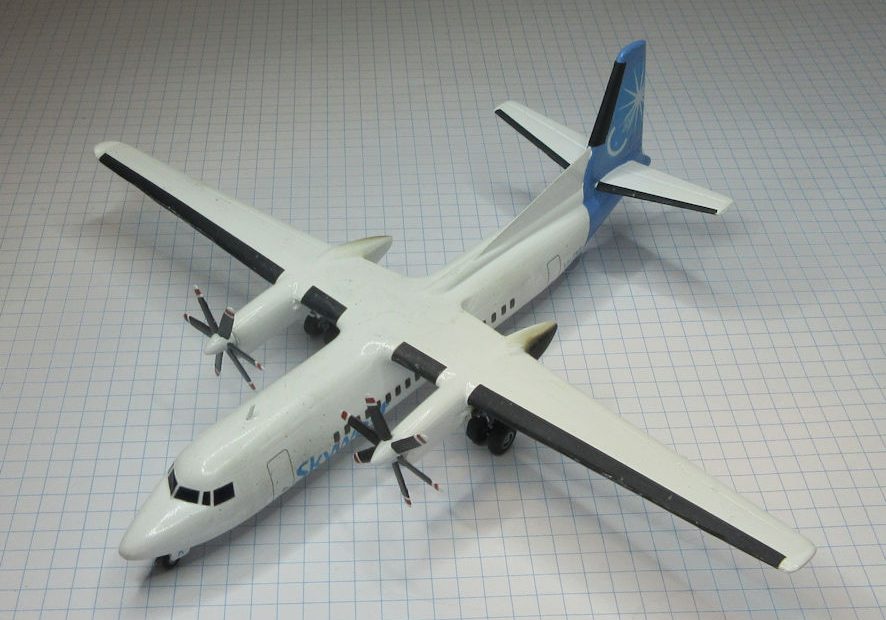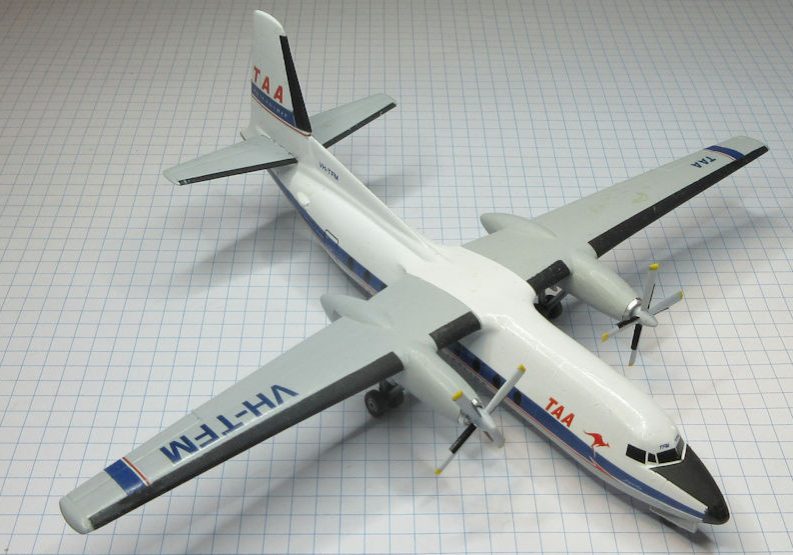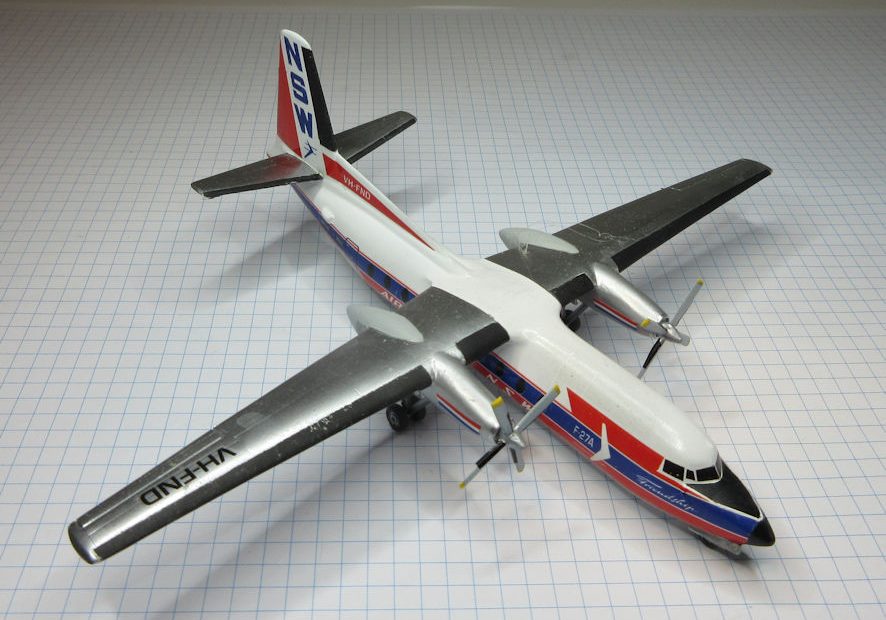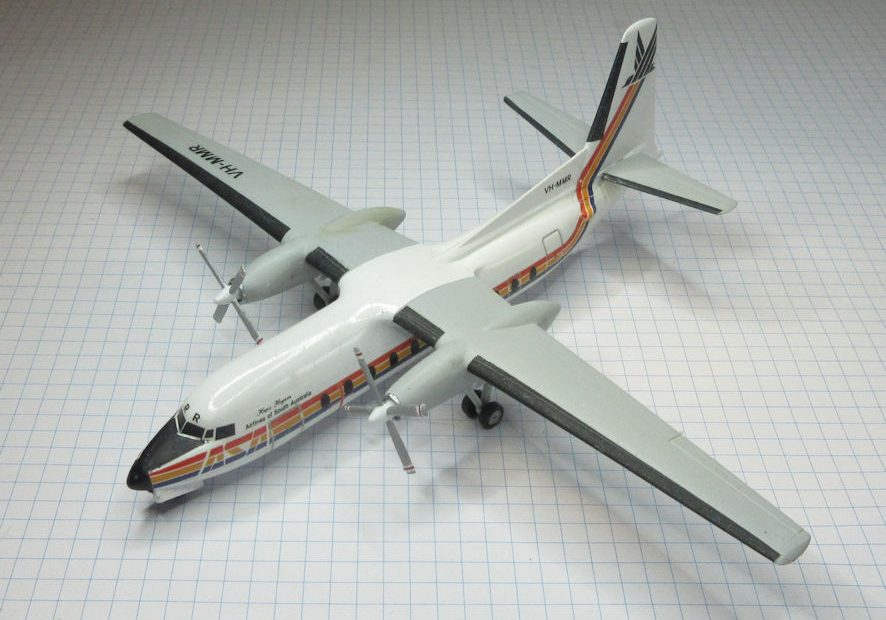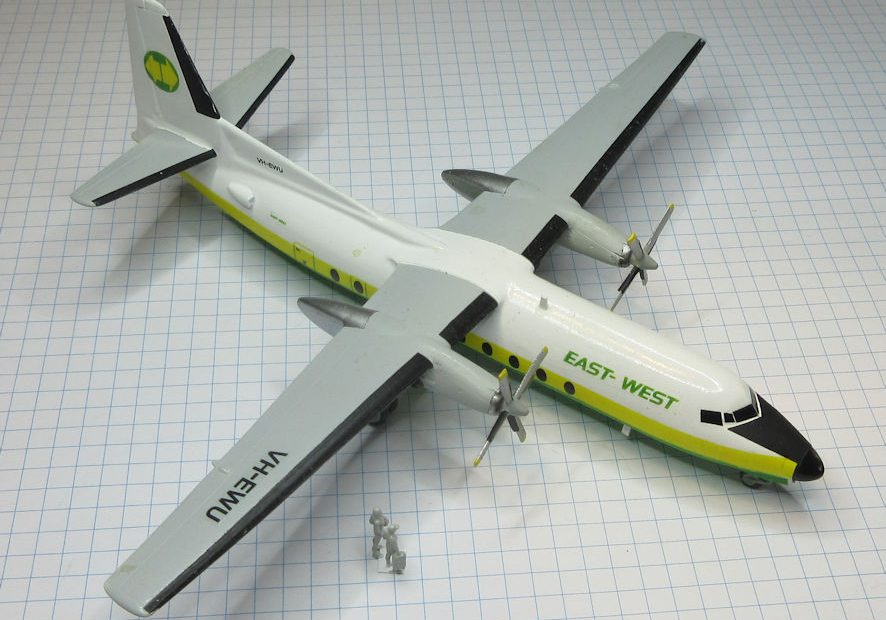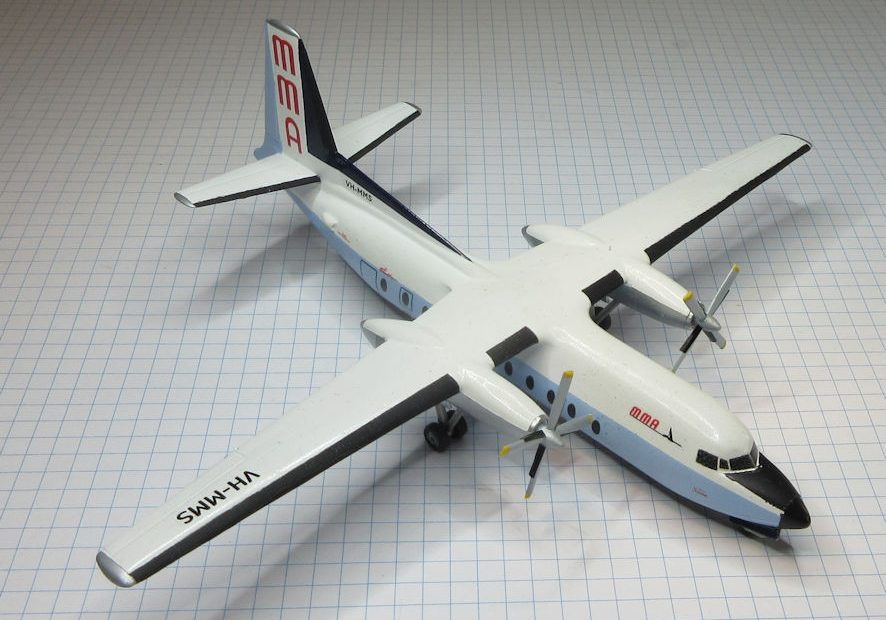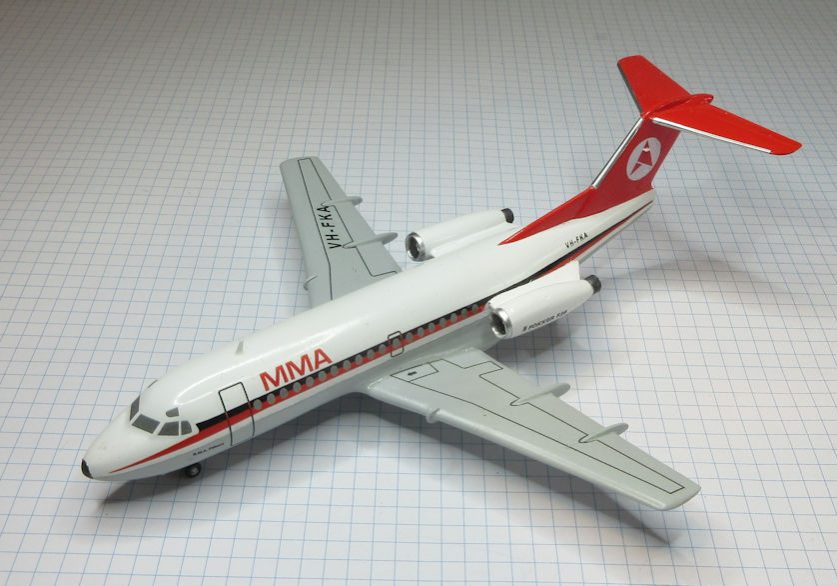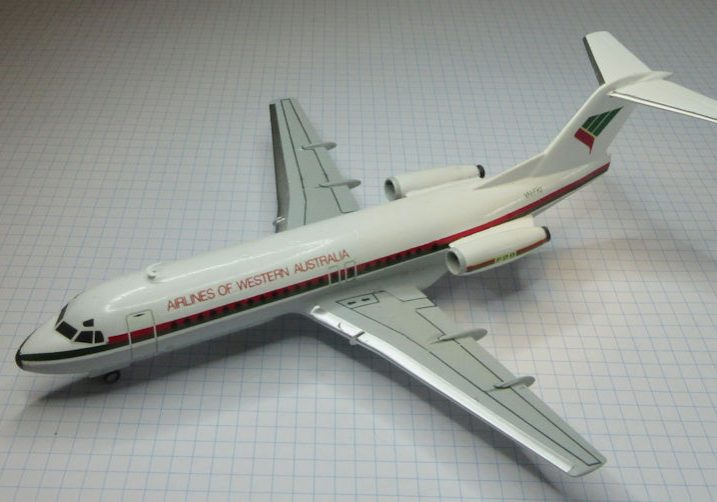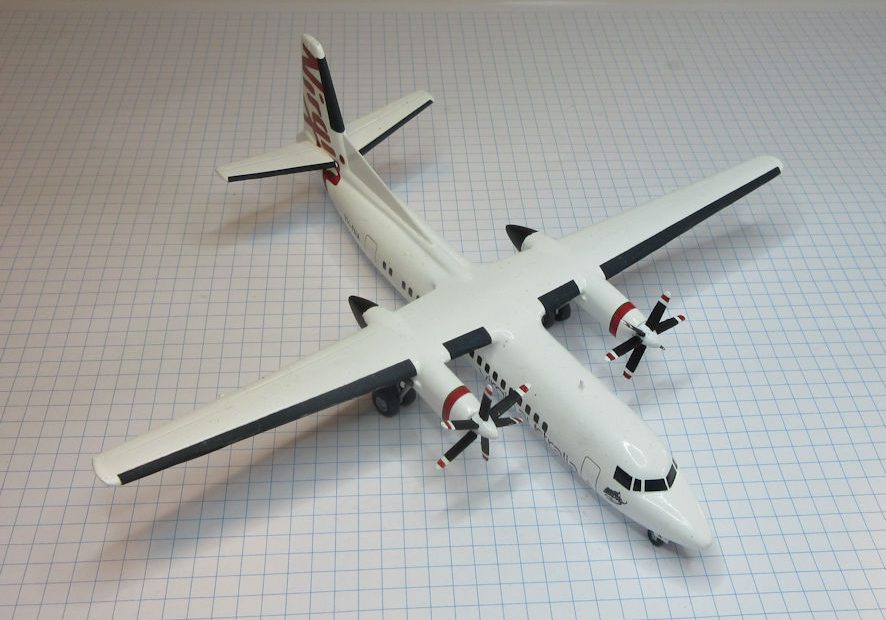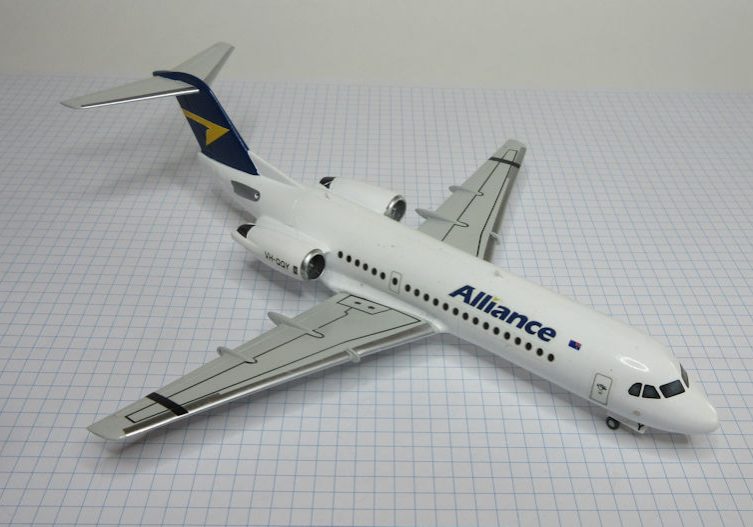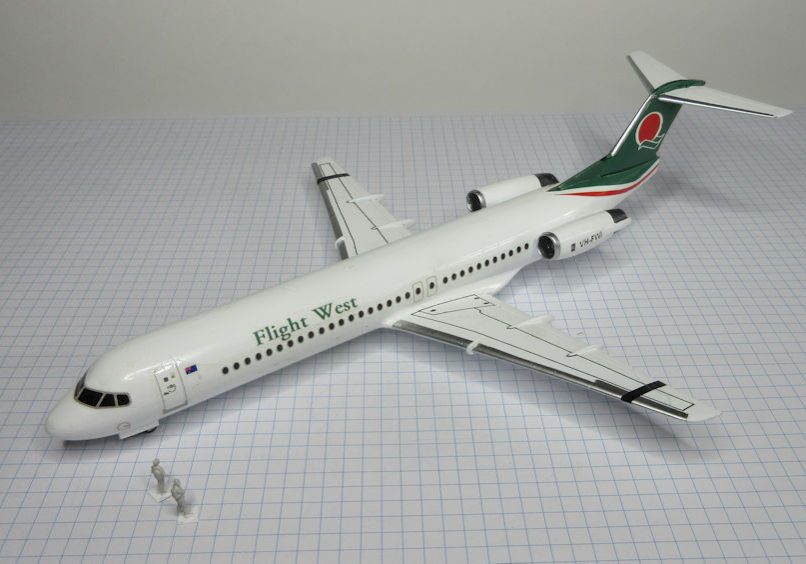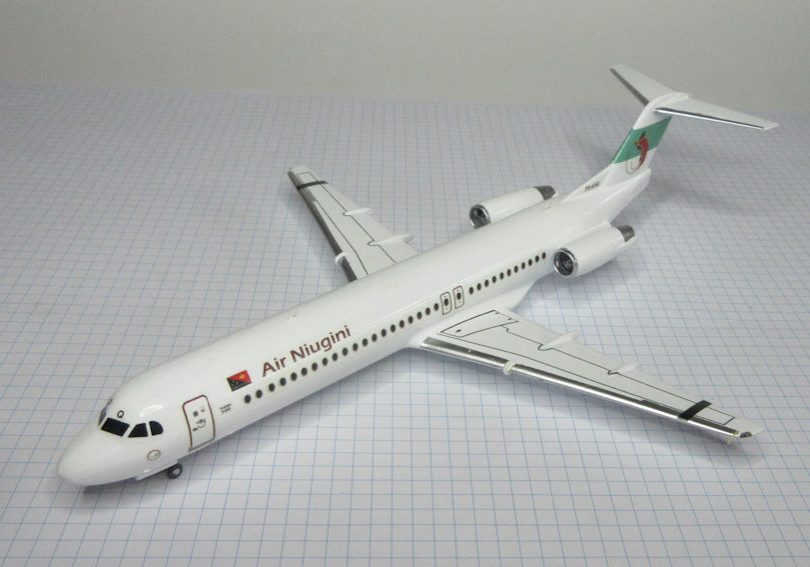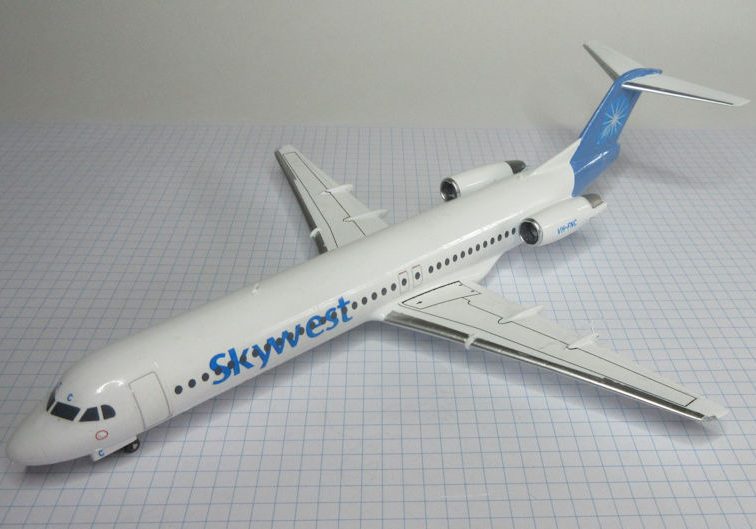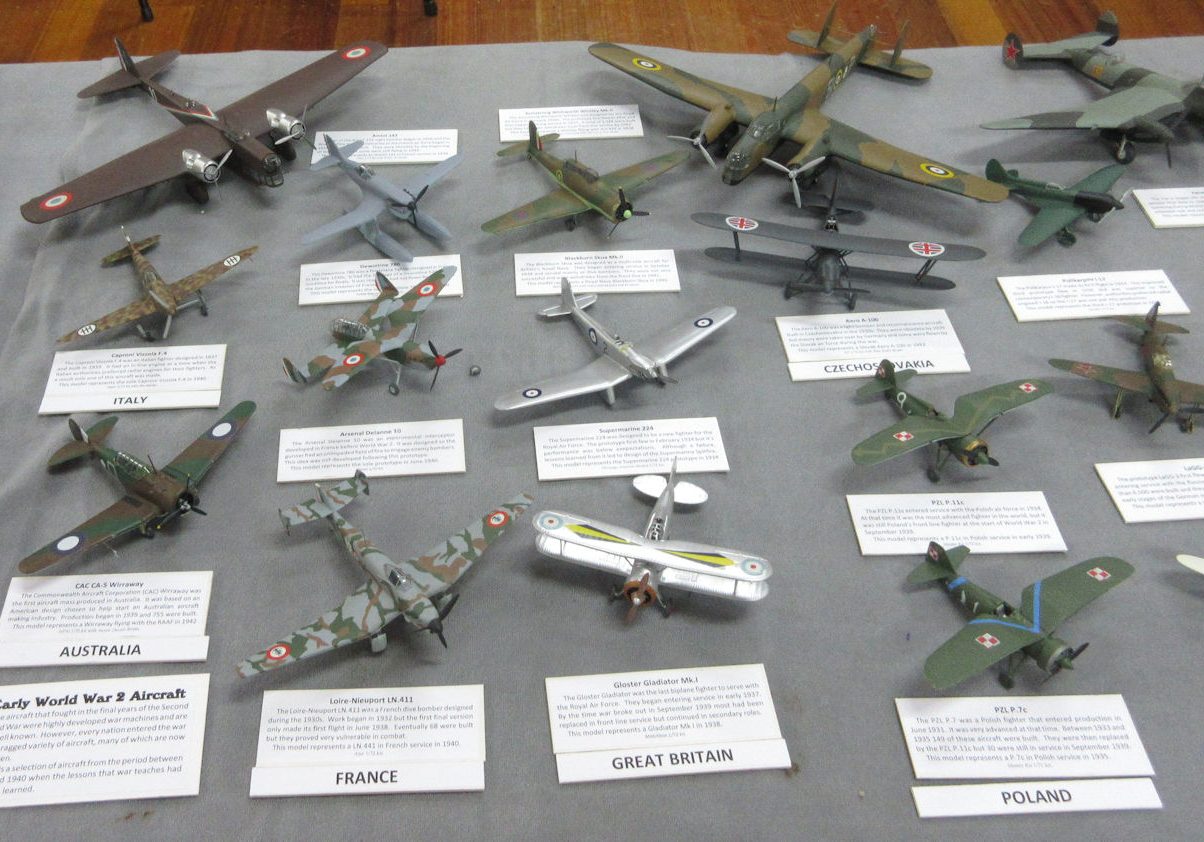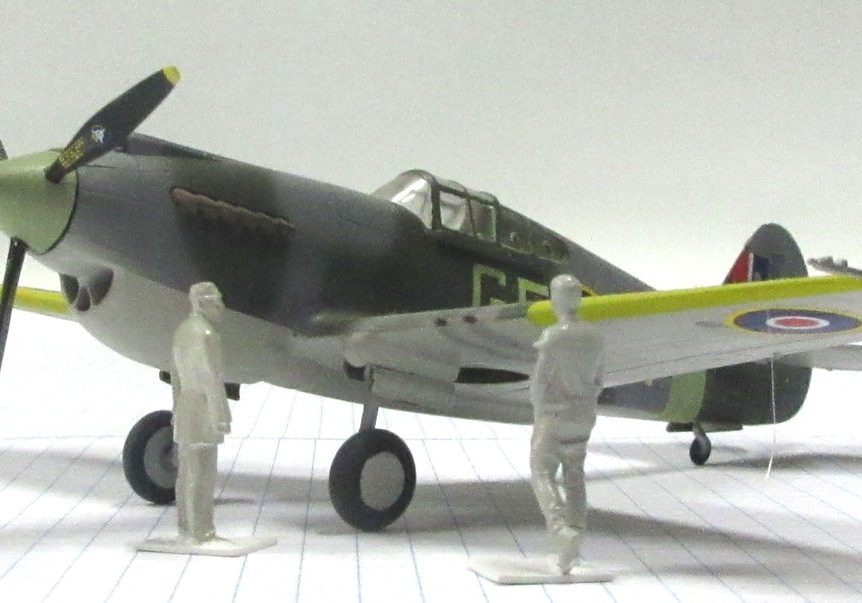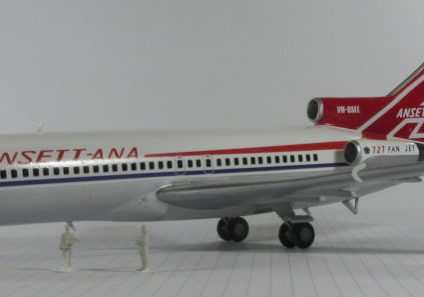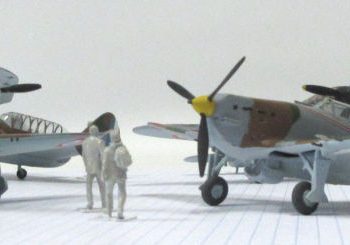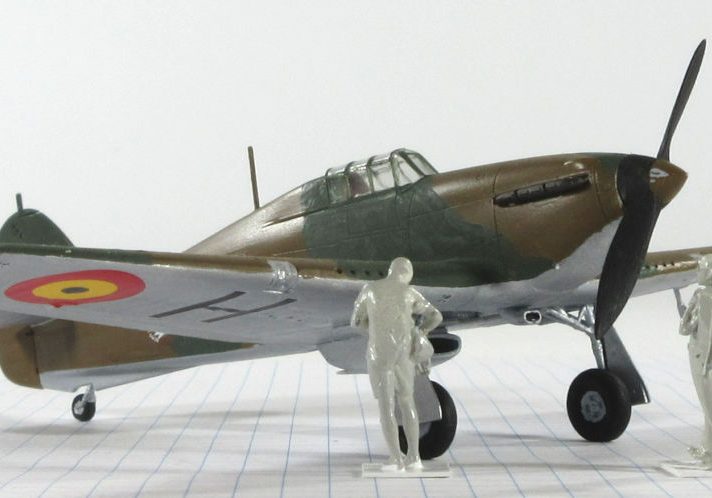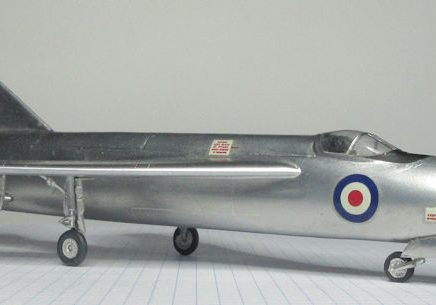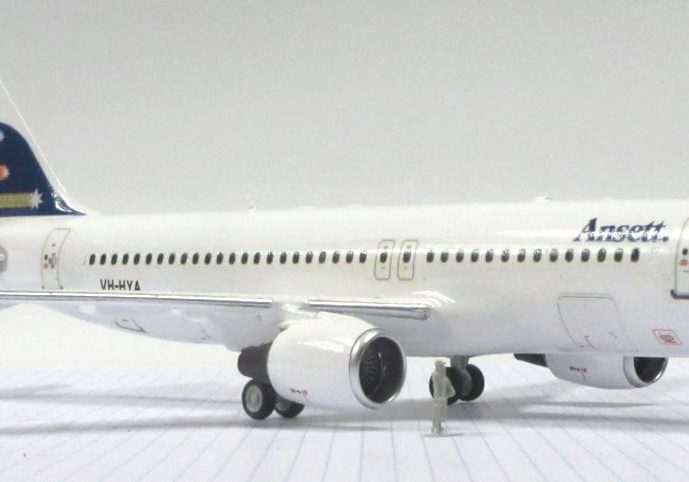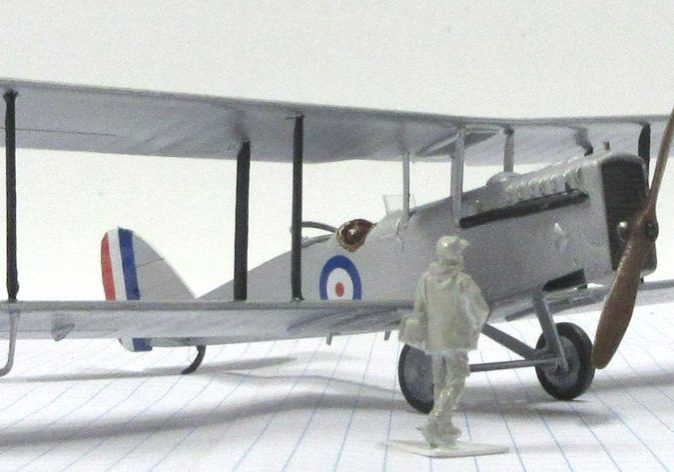Models
After the end of World War II in 1945 there were so many surplus ex-military Douglas DC-3 airliners (military designation C-47) available that they dominated most of Australia’s regional air networks for the coming decade and a half. They provided good solid and reliable service but they had been designed in the 1930s and flew at low altitudes so passengers in them could experience very rough flights at times and they flew slowly in comparison to more modern airliners. By the middle of the 1950s they were also becoming uneconomical to operated in regional and remote Australia. Something was needed to replace them.
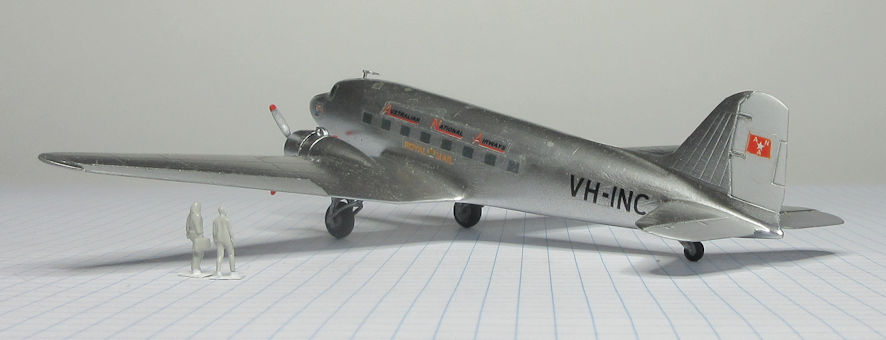
An Australian National Airways DC-3 circa 1953 View this aircraft
Around the world several aircraft manufacturers set about designing the DC-3 replacement. One of them was the Airspeed Ambassador designed in Britain. In the late 1950s one of Australia’s regional airlines, Butler Air Transport, imported one or two which flew in regional New South Wales until that airline was acquired by Ansett Transport Industries and they were returned to Britain. (Image to be added when available.)

A Butler Air Transport Airspeed Ambassador flying in New South Wales in 1958. View this aircraft and Read the Workbench Notes
During this period Australia’s domestic airlines were closely regulated by the Commonwealth and State governments. The Commonwealth government allowed only two major domestic interstate airlines, the government owned Trans Australia Airlines (TAA) and the privately owned one which became Ansett-ANA after 1956. In New South Wales there were two regional airlines, Butler Air Transport and East West Airlines, in South Australia there was Guinea Airways, in Western Australia there was MacRobertson Miller Airlines and in Queensland there was Qantas. After it acquired ANA, Ansett Transport Industries set about acquiring control of the regional airlines and eventually acquired all of them except in Queensland where the government owned TAA (which took over Qantas services) and so could not be acquired. There were no successful regional airlines in Victoria or Tasmania despite attempts to establish them because they were too small to make airline services economically viable.
Perhaps the most successful of the DC-3 replacements was the Fokker F-27 Friendship which was designed and built in Holland. It was a vast improvement over the DC-3 in many ways; it had turboprop engines so it was much faster and had a pressurized and air conditioned cabin so it was more comfortable and could fly above most of the bumpy weather. In 1957 the Australian government gave approval for the importation of the F-27s and they began arriving in Australia from mid 1959. Over the coming decades there were eventually more than eighty Fokker F-27 registered in Australia.
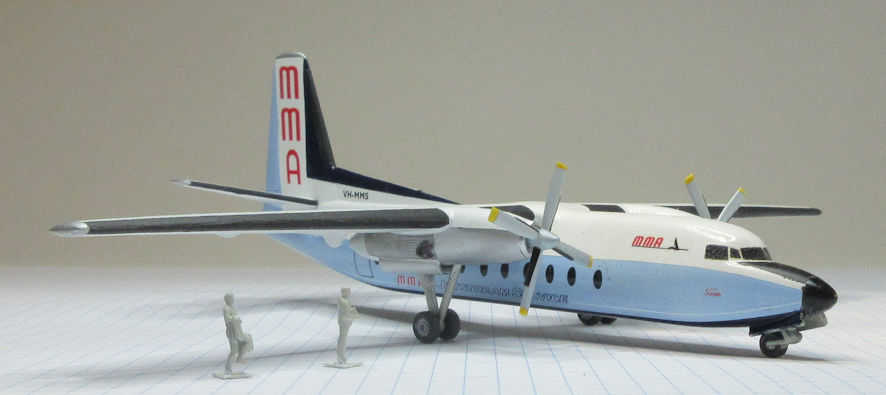
A MacRobertson Miller Airlines F-27 circa 1959 View this aircraft
The first MacRobertson Miller Airlines F-27 arrived in Western Australia just before Christmas and was immediately very popular. The speed and comfort of its flight, particularly over the very long Western Australian distances, meant that passengers booked flights on it well in advance, waiting days or weeks to fly in a F-27 rather than immediately in an old, uncomfortable and slow DC-3.
Other Australian domestic airlines took delivery of their first F-27s around the same time, TAA beginning flights in them between Melbourne and Tasmania in late 1959.
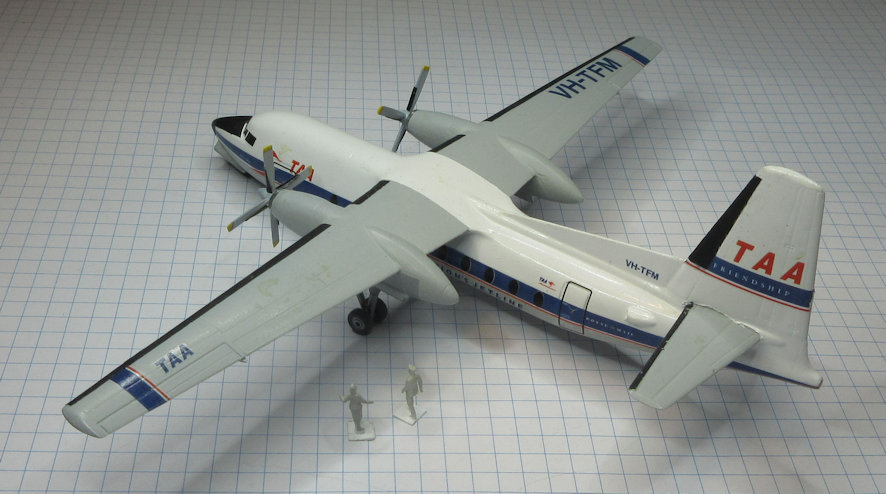
A Trans Australia Airlines F-27 in 1967 View this aircraft
As Ansett Transport Industries acquired the regional airlines it instituted a policy or renaming them with a similar theme so that the New South Wales airline Butler Air Transport became Airlines of New South Wales, Guinea Airways became Airlines of South Australia and when MacRobertson Miller Airlines was finally acquired it became Airlines of Western Australia. The liveries applied to those airlines reflected these changes.
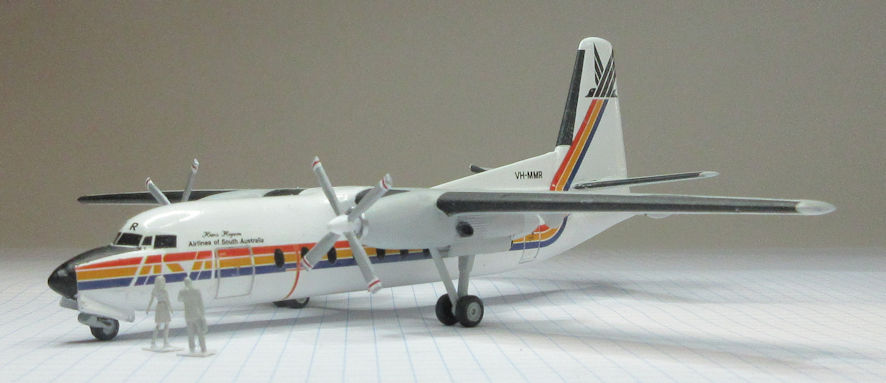
An Airlines of South Australia F-27 in 1990. View this aircraft
A new version of the Fokker F-27 was introduced from 1967, the F-27-500 which was 1.5 meters longer and could carry up to 55 passengers. It could easily be told from earlier F-27s by its more pointed nose. In 1987 Ansett Transport Industries finally acquired East West with plans to use it as a budget airline and painted it in a new colourful livery to match its new role.
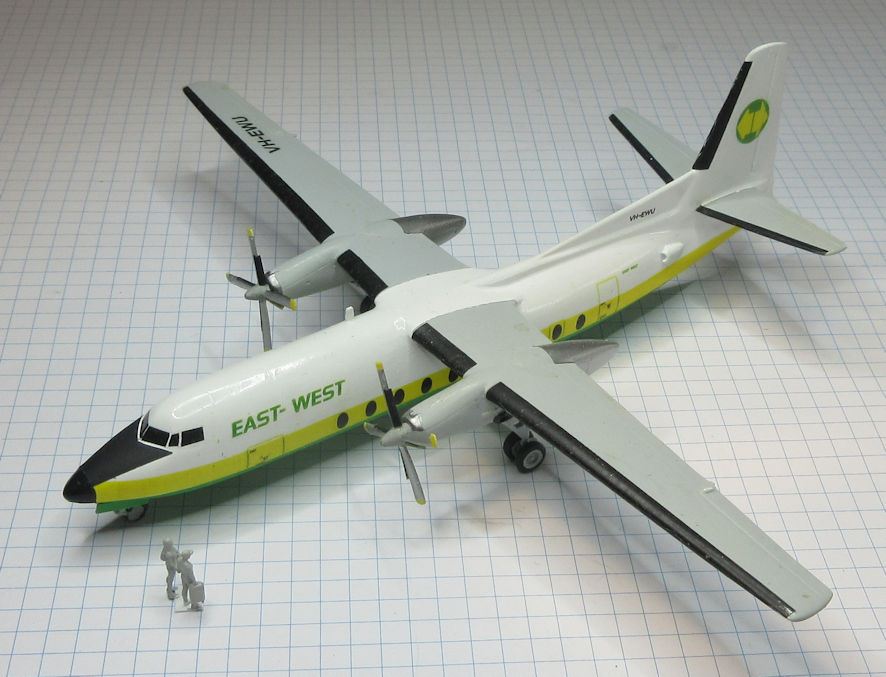
An East West Airlines Fokker F-27-5000 in 1988. View this aircraft
Following on from the success of it’s F-27s Fokker announced that it would launch a pure jet Fokker F-28 Fellowship which would offer greater speed and comfort and carry more passengers than the F-27s. The first one flew in February 1969 and eventually 24 were registered in Australia. Three were flown by the Australian government’s Department of Transport and the rest by East West Airlines and Ansett Transport Industries’ Airlines of New South Wales and MacRobertson Miller Airlines which was later rebranded Airlines of Western Australia.
The first Fokker F-28s arrived in Australia in 1970 and flew on the longer routes in New South Wales and Western Australia. Ansett Transport acquired full ownership of MacRobertson Miller Airlines in 1968 so when the first F-28s arrived in Western Australia they were still branded MMA but flew in the colours of Ansett Airlines of Australia.
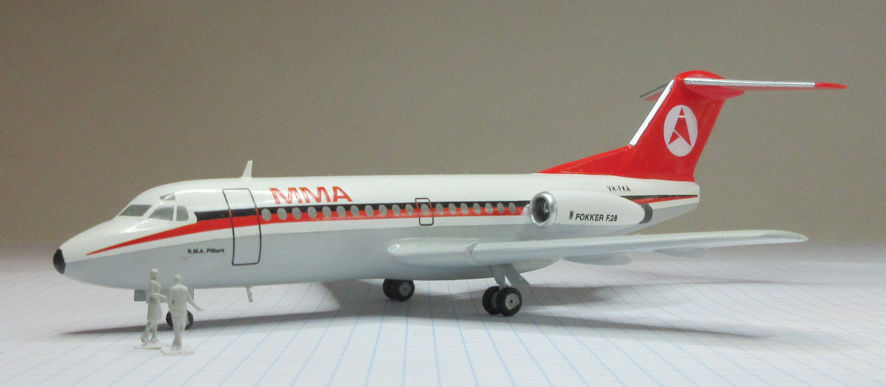
A MMA Fokker F-28-1000 in Ansett colours in the early 1970s. View this aircraft and Read the Workbench Notes
An improved version of the F-28, the F-28-4000 had an extended wingspan, more powerful but quieter engines and a lengthened fuselage to accommodate up to 85 passengers in a revised and more modern looking cabin. They debuted in 1976 and ten F-28-4000s were registered in Australia, most of them flying for Ansett Transport Industries in New South Wales and Western Australia. By the time they began flying in Western Australia MMA had been rebranded Airlines of Western Australia.
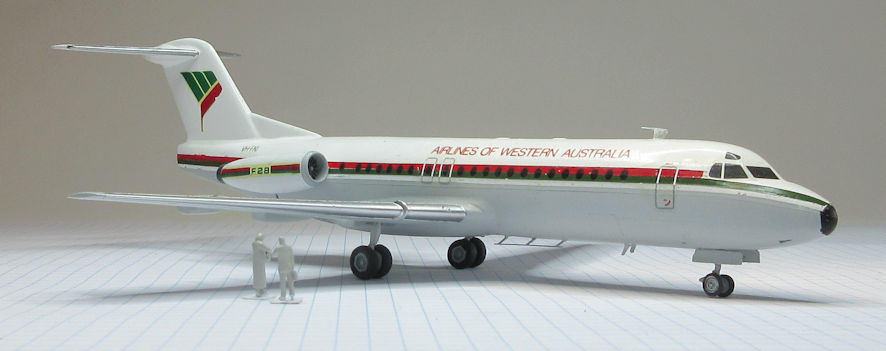
An Airlines of Western Australia Fokker F-28-4000 in 1983. View this aircraft and Read the Workbench Notes
By the early 1980s Fokker’s F-27s and F-28s were becoming outmoded technology and facing competition by new generations of regional airliners. As a result Fokker decided to develop improved versions of both airliners by incorporating new technologies such as modern and more efficient engines and aviaonics with enlarged and refined airframes. The result was the Fokker 50 turboprop airliner that replaced the F-27 in production and the turbofan powered Fokker 100 which replaced the Fokker-28.
Coinciding with the arrival of Fokker 50s and Fokker 100s in Australia, at the end of the 1980s Australian governments also began to deregulate the nation’s domestic airline industry. With the industry open to competition Ansett Transport Industries’ regional airlines struggled and were absorbed into the parent airline. A number of small airlines set up flying on Australia’s regional airways, one of they was Skywest, had began as a small airline in Western Australia and grew to fly on many of the state air routes by the beginning of the 2000s filling the gap left by Airlines of Western Australia. It’s fleet included Fokker 50s and Fokker 100s.
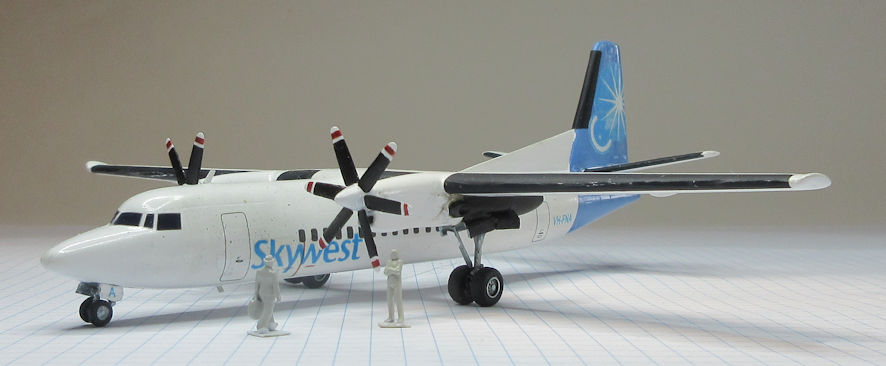
A Skywest Fokker 50 in 2009. View this aircraft
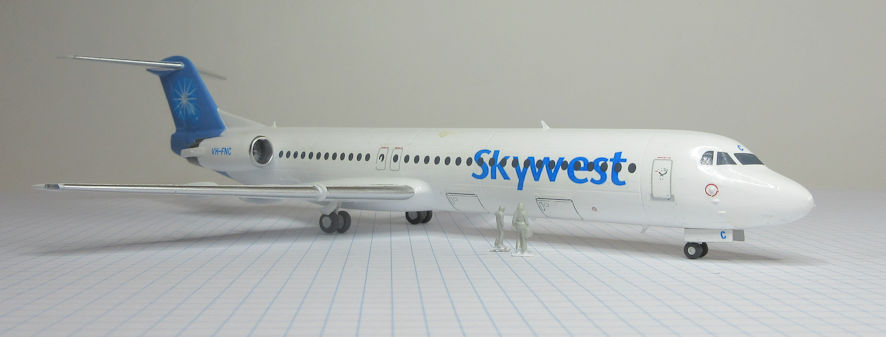
A Skywest Fokker 100 in 2012. View this aircraft and Read the Workbench Notes
Another regional airline, Flight West Airlines, was established 1987 to provide flights in regional Queensland but went out of business in 2001.
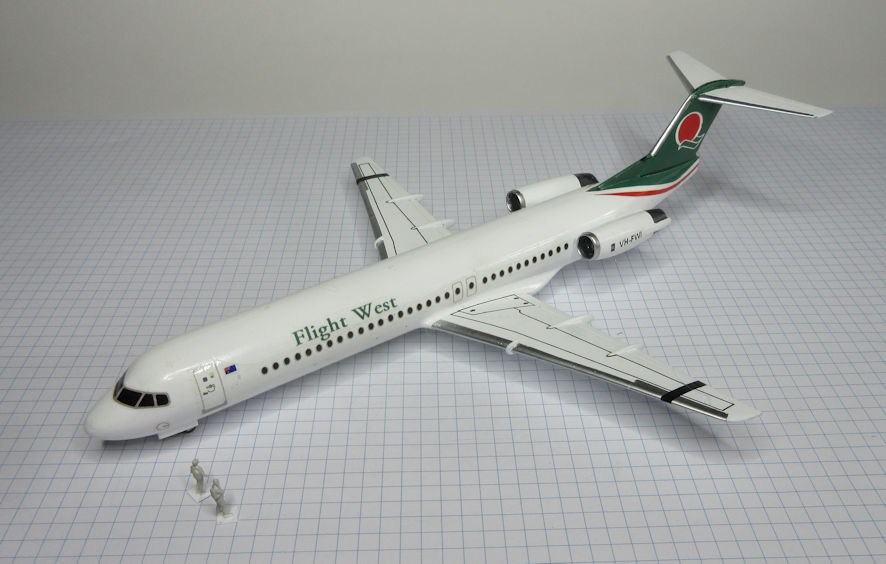
A Flight West Fokker 100 in 2000. View this aircraft and Read the Workbench Notes
A regular visitor to Australia was Fokker 100s flown by the Papua New Guinea airline Air Niugini.
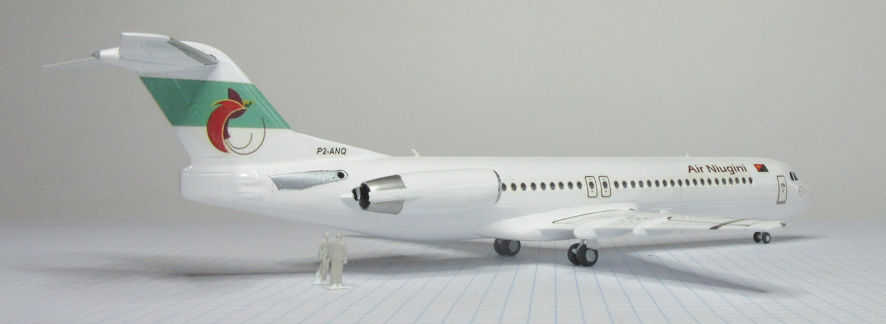
An Air Niugini Fokker 100 in 2015. View this aircraft and Read the Workbench Notes
Fokker also produced a shortened version of the Fokker 100 called the Fokker 70. It was designed to meet the needs of airlines for which the Fokker 50 was too small and the Fokker 100 was too large. It was basically a Fokker 100 with 4.62 meters removed from the fuselage which reduced passenger capacity to 70 to 80 passengers. Deliveries of the Fokker 70 began in 1995.
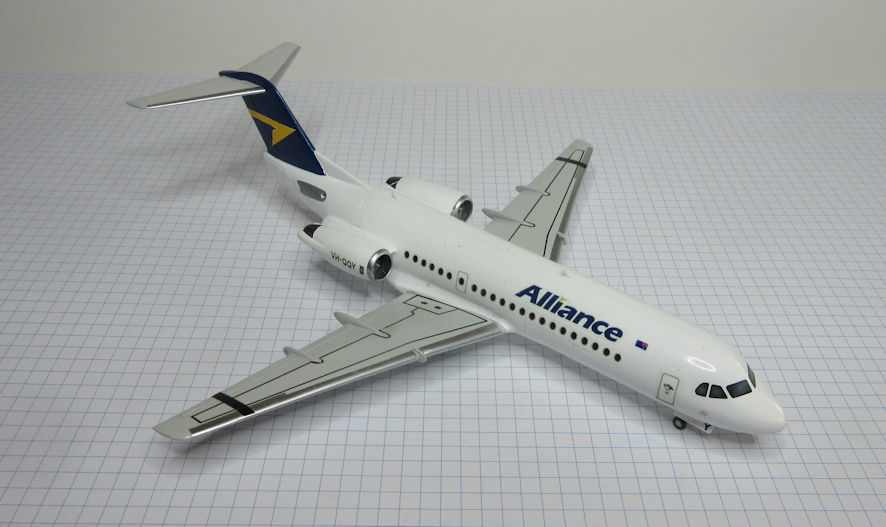
An Alliance Fokker 70 in 2012. View this aircraft and Read the workbench notes
Production of all Fokker airliners ceased in 1997 after the company went bankrupt the previous year. In most parts of the world these airliners have now been replaced by other airliners but they remain popular in Australia. Of the 126 Fokker 100s that were flying around the world in April 2020 half of them were in service in Australia (Alliance 31, Qantas Link 17 and Virgin Regional 16). In Australia the collapse of Ansett Transport Industries in 2001 and the emergence of Virgin Australia (originally Virgin Blue) has led to the consolidation of the nation’s domestic airlines into two major groupings led by Qantas and Virgin Australia. This has seen many smaller airlines taken over by major ones, including the acquisition of Skywest by Virgin in 2013. The continuing popularity of the Fokkers means that airliners that once flew in the livery of one airline now continue to fly in the livery of another.
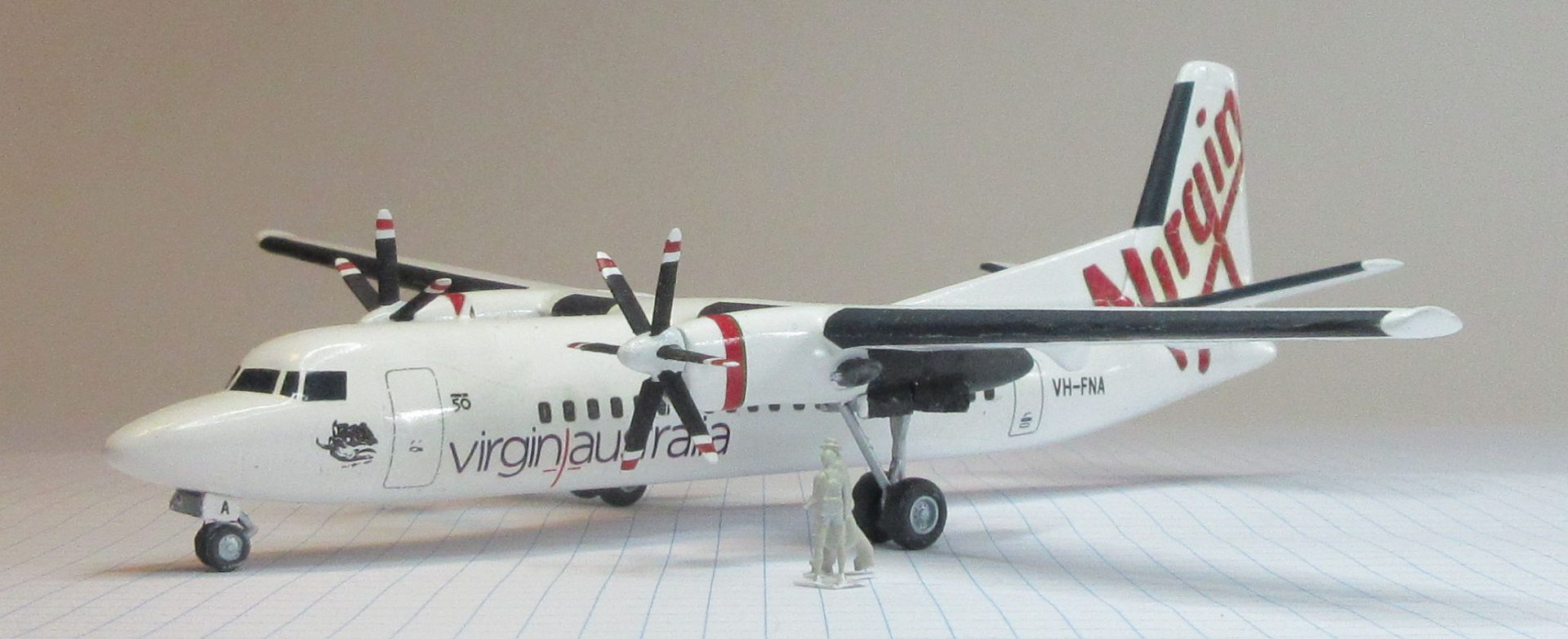
A Fokker 50 flying with Virgin Australia in 213, the same aircraft that had previously flown with Skywest. View this aircraft

Research
Wikipedia, Aussie Airliners website and my own research in the second and third volumes of my history of Australian civil aviation.
Modelling
The only quality injection moulded kit of any of these Fokkers in 1/144 is the Revell Fokker 100. Finding a quality injection moulded F-27 or F-28 is a challenge although F-Rsin Plastic offer F-28s which I found hard going. Eastern Express offer F-27s and Fokker 50s but I was not very impressed, particularly their F-27-500 which ended up in my rubbish bin. There are a lot of decals for all the Fokkers and most of the Australian ones come from Hawkeye. If you are interested in making New Zealand Fokkers have a look at the Oldmodels website which offers just about every conceivable New Zealand scheme.
So far as I am aware the only 1/72 Fokker kits are F-27 from Airfix and Esci. Both are quite old kits and hard to find.
